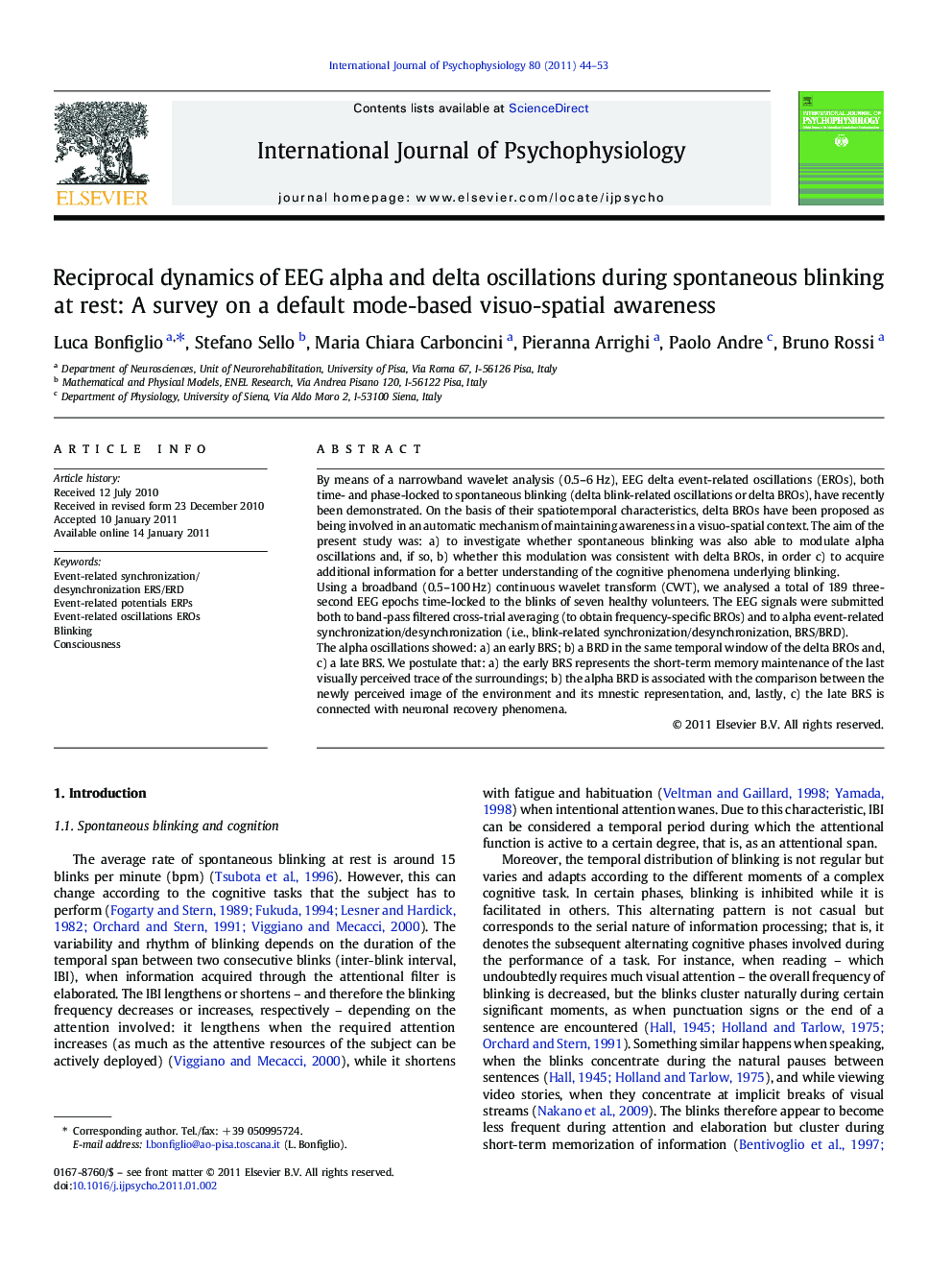| کد مقاله | کد نشریه | سال انتشار | مقاله انگلیسی | نسخه تمام متن |
|---|---|---|---|---|
| 930152 | 1474456 | 2011 | 10 صفحه PDF | دانلود رایگان |

By means of a narrowband wavelet analysis (0.5–6 Hz), EEG delta event-related oscillations (EROs), both time- and phase-locked to spontaneous blinking (delta blink-related oscillations or delta BROs), have recently been demonstrated. On the basis of their spatiotemporal characteristics, delta BROs have been proposed as being involved in an automatic mechanism of maintaining awareness in a visuo-spatial context. The aim of the present study was: a) to investigate whether spontaneous blinking was also able to modulate alpha oscillations and, if so, b) whether this modulation was consistent with delta BROs, in order c) to acquire additional information for a better understanding of the cognitive phenomena underlying blinking.Using a broadband (0.5–100 Hz) continuous wavelet transform (CWT), we analysed a total of 189 three-second EEG epochs time-locked to the blinks of seven healthy volunteers. The EEG signals were submitted both to band-pass filtered cross-trial averaging (to obtain frequency-specific BROs) and to alpha event-related synchronization/desynchronization (i.e., blink-related synchronization/desynchronization, BRS/BRD).The alpha oscillations showed: a) an early BRS; b) a BRD in the same temporal window of the delta BROs and, c) a late BRS. We postulate that: a) the early BRS represents the short-term memory maintenance of the last visually perceived trace of the surroundings; b) the alpha BRD is associated with the comparison between the newly perceived image of the environment and its mnestic representation, and, lastly, c) the late BRS is connected with neuronal recovery phenomena.
Research Highlights
► Blinks deal with a default mechanism of monitoring of visuospatial context.
► Early alpha BRS corresponds to the STM keeping of information preceding eye closure.
► Alpha BRD marks the match between previous and current information after eye opening.
► Late alpha BRS corresponds to neural recovery phenomena after information processing.
Journal: International Journal of Psychophysiology - Volume 80, Issue 1, April 2011, Pages 44–53